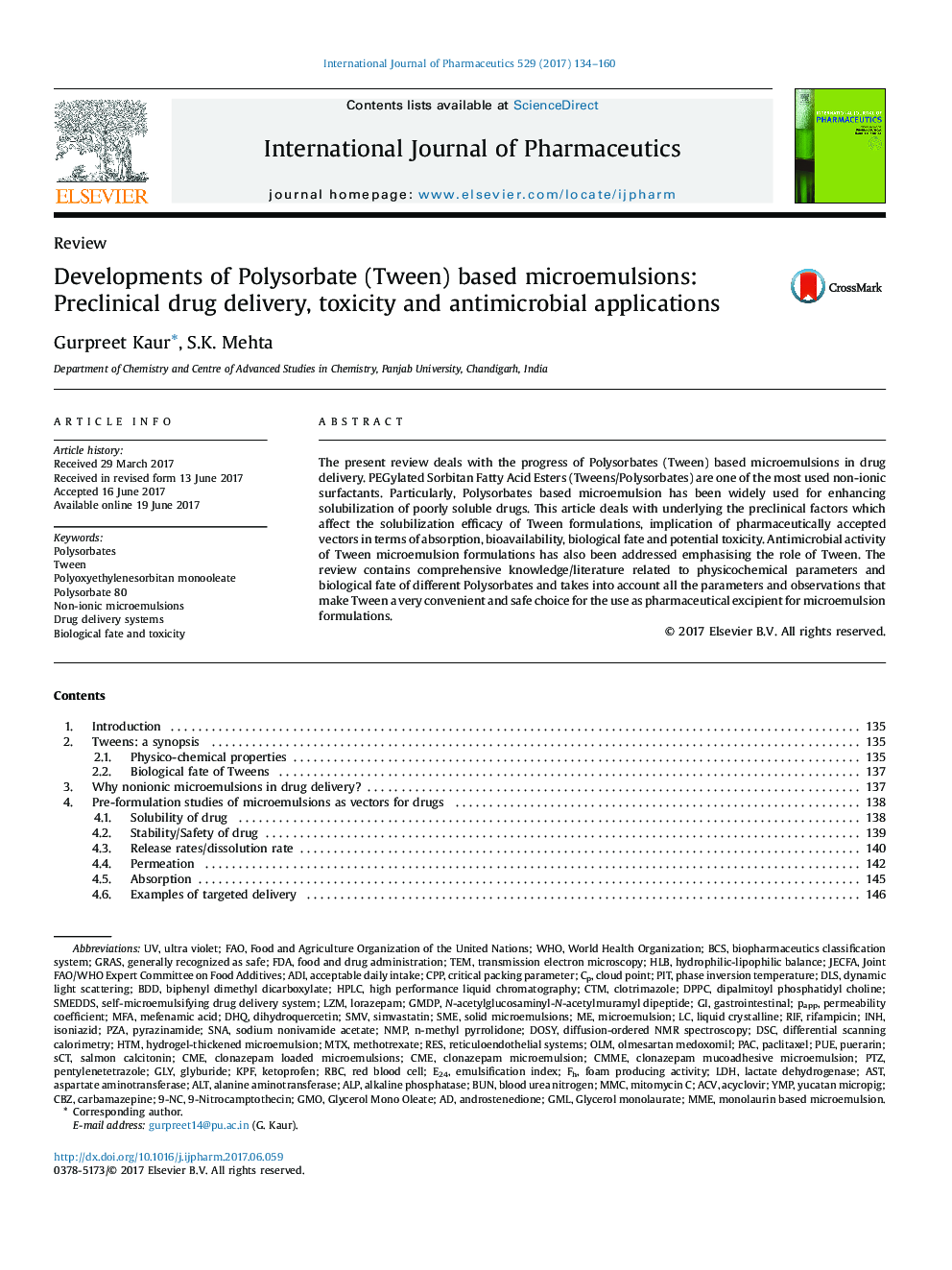| کد مقاله | کد نشریه | سال انتشار | مقاله انگلیسی | نسخه تمام متن |
|---|---|---|---|---|
| 5550167 | 1557286 | 2017 | 27 صفحه PDF | دانلود رایگان |

- An overview of Tween, a non-ionic most commonly used surfactant.
- Role of their microemulsion towards enhancing solubilisation of poorly soluble drugs.
- Underlying the preclinical factors effecting efficacy of Tween microemulsions.
- Implication of vectors in terms of absorption, biological fate, toxicity.
- Cellular response of these formulations against pathogens like bacteria, fungi etc.
The present review deals with the progress of Polysorbates (Tween) based microemulsions in drug delivery. PEGylated Sorbitan Fatty Acid Esters (Tweens/Polysorbates) are one of the most used non-ionic surfactants. Particularly, Polysorbates based microemulsion has been widely used for enhancing solubilization of poorly soluble drugs. This article deals with underlying the preclinical factors which affect the solubilization efficacy of Tween formulations, implication of pharmaceutically accepted vectors in terms of absorption, bioavailability, biological fate and potential toxicity. Antimicrobial activity of Tween microemulsion formulations has also been addressed emphasising the role of Tween. The review contains comprehensive knowledge/literature related to physicochemical parameters and biological fate of different Polysorbates and takes into account all the parameters and observations that make Tween a very convenient and safe choice for the use as pharmaceutical excipient for microemulsion formulations.
147
Journal: International Journal of Pharmaceutics - Volume 529, Issues 1â2, 30 August 2017, Pages 134-160